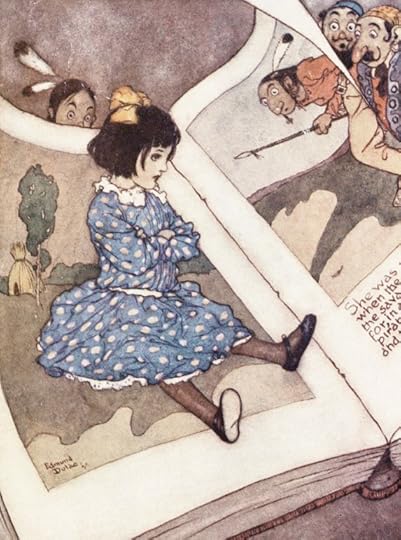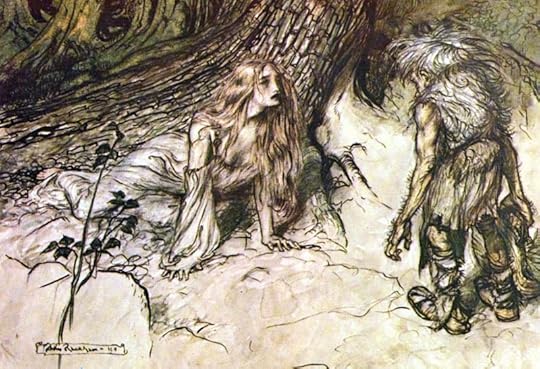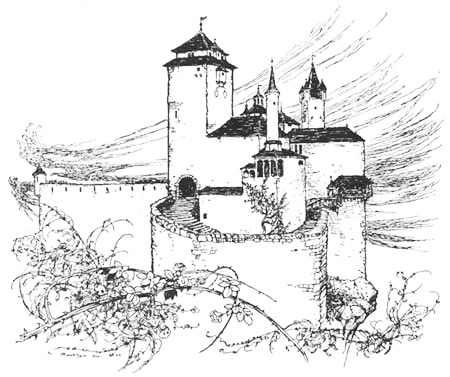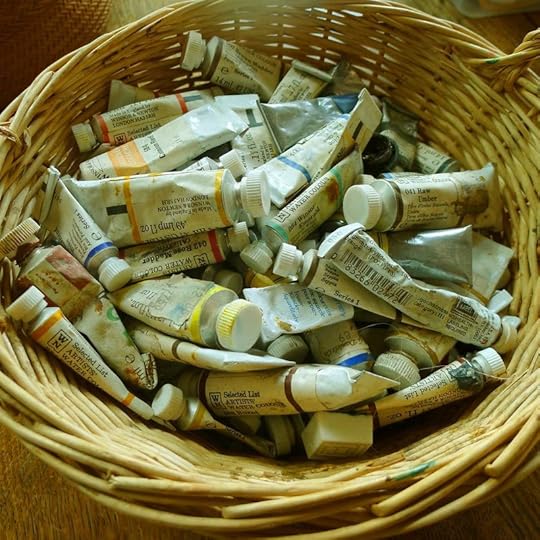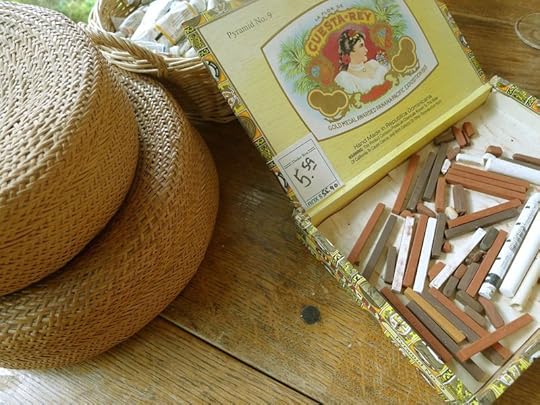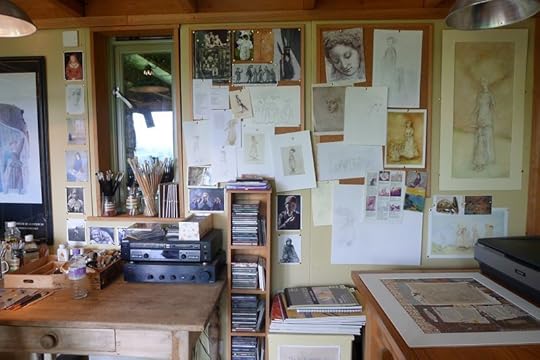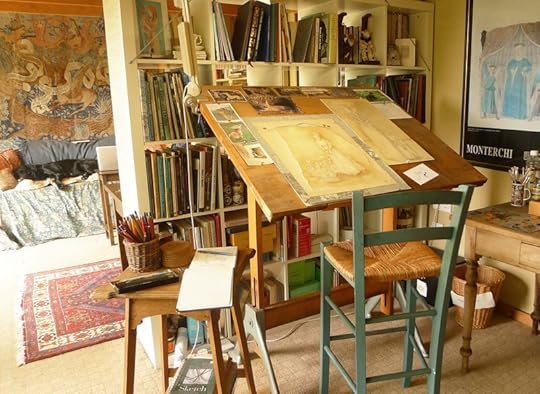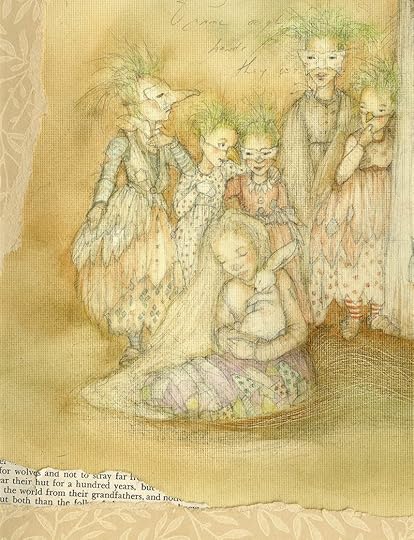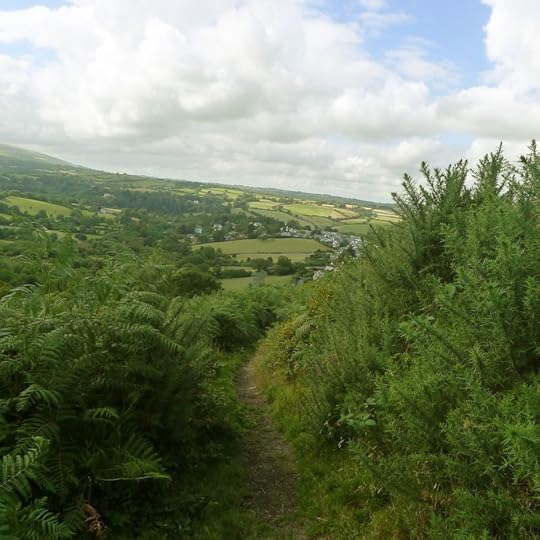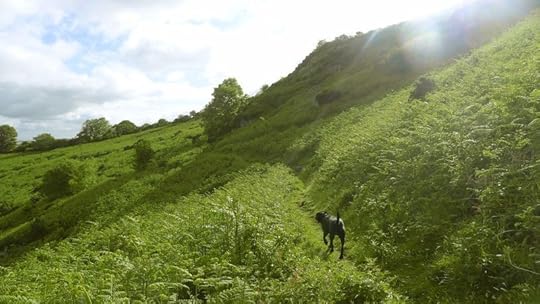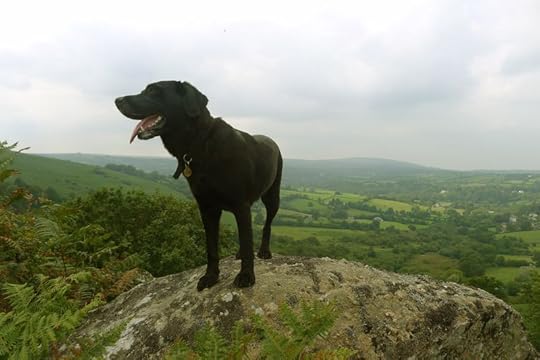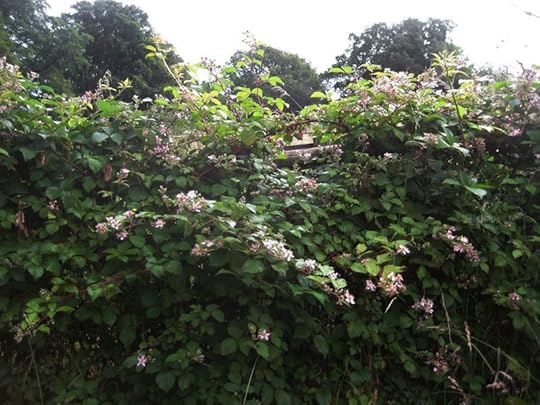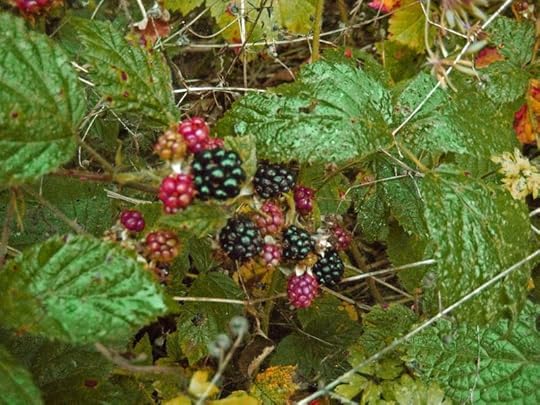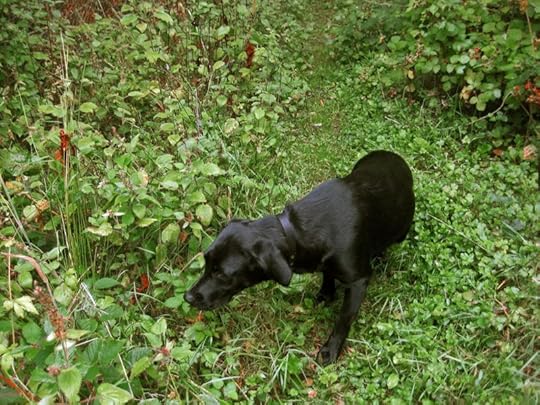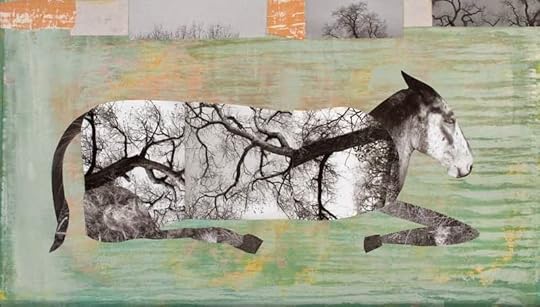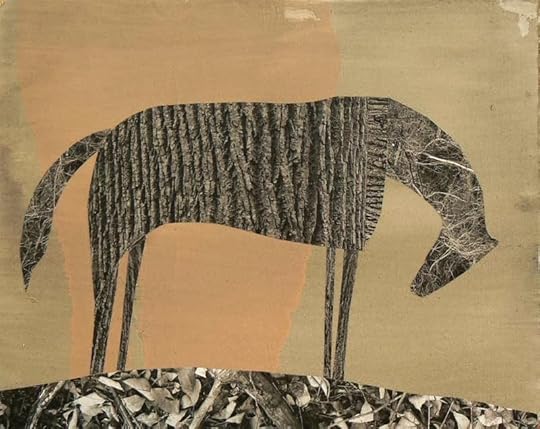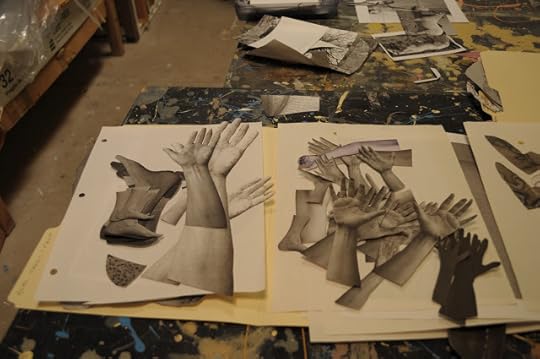Terri Windling's Blog, page 156
September 16, 2014
The Storyteller's Art
Philip Pullman on the role of story in contemporary fiction in "The Storyteller's Art" (BN.com, 2oo7):
“[T]here was a sort of embarrassment about storytelling that struck home powerfully about one hundred years ago, at the beginning of modernism. We see a similar reaction in painting and in music. It's a preoccupation suddenly with the surface rather than the depth. So you get, for example, Picasso and Braque making all kinds of experiments with the actual surface of the painting. That becomes the interesting thing, much more interesting than the thing depicted, which is just an old newspaper, a glass of wine, something like that. In music, the Second Viennese School becomes very interested in what happens when the surface, the diatonic structure of the keys breaks down, and we look at the notes themselves in a sort of tone row, instead of concentrating on things like tunes, which are sort of further in, if you like. That happened, of course, in literature, too, with such great works as James Joyce's Ulysses, which is all about, really, how it's told. Not so much about what happens, which is a pretty banal event in a banal man's life. It's about how it's told. The surface suddenly became passionately interesting to artists in every field about a hundred years ago....
"In the field of literature, story retreated. The books we talked about just now, Middlemarch, Bleak House, Vanity Fair -- their authors were the great storytellers as well as the great artists. After modernism, things changed. Indeed, modernism sometimes seems to me like an equivalent of the Fall. Remember, the first thing Adam and Eve did when they ate the fruit was to discover that they had no clothes on. They were embarrassed. Embarrassment was the first consequence of the Fall. And embarrassment was the first literary consequence of this modernist discovery of the surface. 'Am I telling a story? Oh my God, this is terrible. I must stop telling a story and focus on the minute gradations of consciousness ...
"So there was a great split that took place. Story retreated, as it were, into genre fiction -- into crime fiction, into science fiction, into romantic fiction -- whereas the high-art literary people went another way. Children's books held onto the story, because children are rarely interested in surfaces in that sort of way. They're interested in what-happened and what-happened-next.
 "I found it a great discipline, when I was writing The Golden Compass and other books, to think that there were some children in the audience. I put it like that because I don't say I write for children. I find it hard to understand how some writers can say with great confidence, 'Oh, I write for fourth grade children' or 'I write for boys of 12 or 13.' How do they know? I don't know. I would rather consider myself in the rather romantic position of the old storyteller in the marketplace: you sit down on your little bit of carpet with your hat upturned in front of you, and you start to tell a story. Your interest really is not in excluding people and saying to some of them, 'No, you can't come, because it's just for so-and-so.' My interest as a storyteller is to have as big an audience as possible. That will include children, I hope, and it will include adults, I hope. If dogs and horses want to stop and listen, they're welcome as well."
"I found it a great discipline, when I was writing The Golden Compass and other books, to think that there were some children in the audience. I put it like that because I don't say I write for children. I find it hard to understand how some writers can say with great confidence, 'Oh, I write for fourth grade children' or 'I write for boys of 12 or 13.' How do they know? I don't know. I would rather consider myself in the rather romantic position of the old storyteller in the marketplace: you sit down on your little bit of carpet with your hat upturned in front of you, and you start to tell a story. Your interest really is not in excluding people and saying to some of them, 'No, you can't come, because it's just for so-and-so.' My interest as a storyteller is to have as big an audience as possible. That will include children, I hope, and it will include adults, I hope. If dogs and horses want to stop and listen, they're welcome as well."
"No book is really worth reading at the age of ten which is not equally – and often far more – worth reading at the age of fifty and beyond." - C.S. Lewis
The ones that need telling
"The Great Stories are the ones you have heard and want to hear again. The ones you can enter anywhere and inhabit comfortably. They don’t deceive you with thrills and trick endings. They don’t surprise you with the unforeseen. They are as familiar as the house you live in. Or the smell of your lover’s skin. You know how they end, yet you listen as though you don’t. In the way that although you know that one day you will die, you live as though you won’t. In the Great Stories you know who lives, who dies, who finds love, who doesn’t. And yet you want to know again. That is their mystery and their magic."
- Arundhati Roy (The God of Small Things)
"A story is not like a road to follow...it's more like a house. You go inside and stay there for a while, wandering back and forth and settling where you like and discovering how the room and corridors relate to each other, how the world outside is altered by being viewed from these windows. And you, the visitor, the reader, are altered as well by being in this enclosed space, whether it is ample and easy or full of crooked turns, or sparsely or opulently furnished. You can go back again and again, and the house, the story, always contains more than you saw the last time. It also has a sturdy sense of itself of being built out of its own necessity, not just to shelter or beguile you."
- Alice Munro (Selected Stories, 1968-1994)
"There's stories and then there's stories. The ones with any worth change your life forever, perhaps only in a small way, but once you've heard them, they are forever a part of you. You nurture them and pass them on, and the giving only makes you feel better. The others are just words on a page."
- Charles de Lint (Dreams Underfoot)
"I want the difficult stories, the ones that aren’t easy to believe, the twisted ones, the sorrowful ones, the ones that need telling most of all."
- Alice Hoffman (Green Heart)
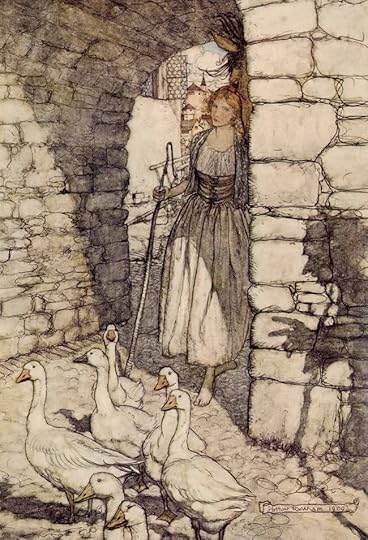 The illustrations above are by Arthur Rackham (1867-1939)
The illustrations above are by Arthur Rackham (1867-1939)
September 14, 2014
Tunes for a Monday Morning
Today, songs from the divine Kate Rusby, who hails from Yorkshire. She's recorded eleven solo albums (the latest of which is Ghosts), plus two albums of Christmas music, and recordings with other singers and bands. Rusby lives in south Yorkshire with her husband (Irish folk musician Damien O'Kane), their children, and a beloved dog named Doris.
Above: "I Courted a Sailor" and "Fairest of All Yarrow," performed at The Cambridge Folk Festival.
Photograph below: Doris at the mic.
Above: Cobbler's Daughter," from a concert in Leeds.
Below: "Who Now Will Sing Me Lullabies?"
Today's song are dedicated to Graham Joyce, who loved Rusby's music too.
September 11, 2014
In the studio, part 2
"If you could say it in words, there would be no reason to paint.” - Edward Hopper
"Why can’t our job here on earth be simply to inspire each other?" - Graham Joyce
In the studio
How to be an artist
Stay loose. Learn to watch snails. Plant impossible gardens. Make little signs that say 'yes' and post them all over your house. Make friends with uncertainty.
- Henry Miller
a note on the door of the Henry Miller Memorial Library in Big Sur, California
"The reward of art is not fame or success but intoxication." - Cyril Connolly
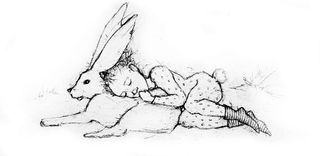 Let me keep my mind on what matters,
Let me keep my mind on what matters,
which is my work,
which is mostly standing still
and learning to be
astonished.
- Mary Oliver (from "The Messenger")
 The painting/collage above is "The Dreaming." In the first and last photographs, Tilly dreams on the studio sofa while work and dream on the page.
The painting/collage above is "The Dreaming." In the first and last photographs, Tilly dreams on the studio sofa while work and dream on the page.
September 9, 2014
Finding stillness
Today, I woke with these words from Saul Bellow at the forefront of my thoughts:
"I feel that art has something to do with the achievement of stillness in the middle of chaos. A stillness which characterizes prayer, too, and the eye of the storm. I think that art has something to do with an arrest of attention in the midst of distraction."
These are words that I live by....or, at least, that I try to.
Graham Joyce has died. I want to write an appreciation of his life and his work...and I find that I can't just yet. He's been very ill for a while, but this came much too soon, and I'm devastated. My heart goes out to his wife and children, and all who loved him.
Today, there are no words. Just gratitude for all the wonderful books, short stories, blog posts, book recommendations, and memories that he's left us.
Blackberry season
It has been a beautiful summer on Dartmoor, full of clear days, and sun, and long mornings outdoors with my work in my lap and my feet in the stream; and on the flip side of that idyllic image it has also been hard (traveling on through the valleys of Big Scary Life Stuff), and busy, and scattered, and demanding. My soul is both full and weary, both enriched and depleted...in typically paradoxical mythic fashion.
So my theme for the autum is "center and focus." Return to the quiet, the land, and the work. It is blackberry season, and time now to harvest the stories that have been ripening, oh so slowly...
....sleeping and dreaming through the long winter...
...then waking with spring, their pink and white blossoms as fragile, bright, and tender as hope.
With autumn, we gather the fruits of our labor, ripening into plump, juicy bursts of sweetness and joy in the sharp briar patch of our lives.
On the hill, Tilly browses the berries and slowly eats her way down the path. So do I.
This means we walk slowly, attentive to the moment. The dizziness of the summer months passes away. The land brings me back to my center, as always; and I'm ready for the work day to begin.
I leave you with this blessing for "heartful work" by the Irish poet/philosopher John O'Donohue (from his wise book Anam Cara):
May the light of your soul guide you.
May the light of your soul bless the
work you do with the secret love and
and warmth of your heart.
May you see in what you do the beauty of your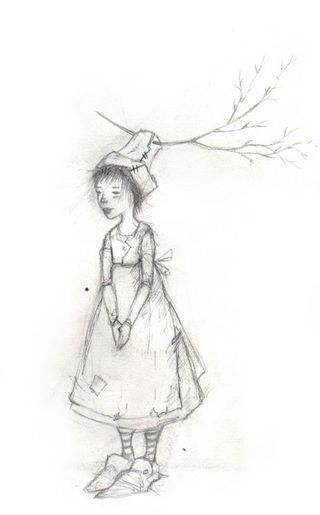 own soul.
own soul.
May the sacredness of your work bring healing,
light and renewal to those who work with you
and to those who see and receive your work.
May your work never weary you.
May it release within you wellsprings of
refreshment, inspiration, and excitement.
May you be present in what you do.
May you never become lost in the bland
absences.
May the day never burden.
May dawn find you awake and alert,
approaching your new day with dreams,
possibilities and promises.
May evening find you gracious and
fulfilled.
May you go into the night blessed, sheltered, and
protected.
May your soul calm, console, and renew you.
And I'll add to O'Donohue's blessing:
My your life, work, and dreams give you wild blackberries.
September 7, 2014
Tunes for a Monday Morning
This week, I am feeling the need for quiet, focus, and to find my creative centre again -- so I'm turning to the music of the great Estonian composer Arvo Pärt, for whom a love of simplicity and silence inspired the musical style he calls tintinabulli.
"On the one hand, silence is like fertile soil, which, as it were, awaits our creative act, our seed," the composer explains. "On the other hand, silence must be approached with a feeling of awe. And when we speak about silence, we must keep in mind that it has two different wings, so to speak. Silence can be both that which is outside of us and that which is inside a person. The silence of our soul, which isn't even affected by external distractions, is actually more crucial but more difficult to achieve."
Above, Pärt's "Spiegel im spiegel," performed by the Portuguese musicians Filipe Melo (piano) and Ana Cláudia Serrão (cello).
Below, "Fratres for Cello and Harp," performed by Arpège Duo in Seoul, Korea.
And third:
A rare English-language piece:"My Heart's in the Highlands" [audio only], performed by Danish soprano Elsa Torp and English organist Christopher Bowers-Broadbent, recorded for Pärt’s Triodion CD (2003). The lyrics come a Robert Burns poem written in 1789.
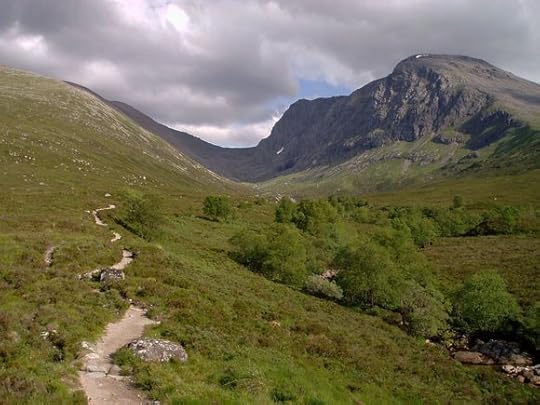
In the Scottish Highlands (photo from Wikipedia)
To watch Dorian Supin's documentary about Pärt, 24 Preludes to a Fugue, go here. (Estonian, with English subtitles.)
September 6, 2014
On resting
I've posted this quote before, but it bears repeating on this quiet day at the end of a very busy summer:
"Every person needs to take one day away. A day in which one consciously separates the past from the future. Jobs, family, employers, and friends can exist one day without any one of us, and if our egos permit us to confess, they could exist eternally in our absence. Each person deserves a day away in which no problems are confronted, no solutions searched for. Each of us needs to withdraw from the cares which will not withdraw from us.”
- Maya Angelou (Wouldn't Take Nothing for My Journey Now)
September 5, 2014
Paying Attention: The Art of Holly Roberts
Years ago I wandered into Etherton Gallery in the downtown arts district of Tucson, Arizona, and found myself surrounded by the work of photographer/painter/collage artist Holly Roberts. I'd never encountered her art before and it hit me with the force of a revelation: glowing on the walls with colors so rich, yet so subtle, I could have stood there forever.
I'm glad I first saw Robert's work this way, for the reproductions in books and online -- beautiful as they are -- don't begin to convey the power of the originals. Built up in layers of photography and paint, the images glimmer with an otherwordly light and contain hidden depths that reveal themselves slowly over time. Sometimes complex, sometimes simple as children's drawings, and filled with mythic and personal resonances, they touched the same place in me as good magical realist fiction: highlighting the mystery of the everyday world. I now own two of her marvellous pieces, the first major art purchases I ever made as a young woman.
Roberts was born in Boulder, Colorado; studied painting at Bellas Artes de Mexico, the University of New Mexico, and Arizona State University; and now lives in New Mexico. Some of her early work relates to the period of her life when she lived on the Zuni Indian reservation, where her husband worked as a doctor. Her art appears in museum collections across the U.S. and is reproduced in three books: Holly Roberts: Works 1989-1999, Holly Roberts: Works 2000-2009, and Holly Roberts: Untitled 50.
"I work intuitively," she says, "painting an abstract painting before applying bits and pieces of photo fragments on the surface. What I am trying for is a painting that can stand alone but that won’t dominate the photo collage that is to follow. Once I start forming the story (made primarily from my own photographs), I allow the photos that I’ve chosen to inform the image, starting with only a vague idea of what it is that I am trying to build. The collage works best when the pieced photos make up something that they aren’t about literally, but rather have a metaphorical or poetic connection, either through subject or texture.
"The large concerns in my life are at the core of my work: the degradation of the environment, spiritual meaning in a world of polarized and extremist religions, the stress and fear of aging, the daily fears and anxieties of being alive in the world today. These collages allow me to continue to do what I have always done with my art: by processing the world through my eyes and my hands, I am able to make some greater sense of the confusion and beauty of the world around me."
Robert's more recent work is focused on collage, still working with photographs as a starting point. The following descriptions of her art art are excerpted from her art blog One Painting at a Time, which I highly recommend. The titles of the pieces can be found in the picture captions. (Run your cursor over the image.)
"Two things helped shaped me as a child: riding my horse, bareback and alone, in the rural ranch land around my home outside of Santa Fe, New Mexico and the nature programs on the Public TV Station, PBS. The shows portrayed a democratic world where nothing was either all good or all bad (except man). Yes, the lioness killed the newborn baby gazelle, but she had (adorable) cubs to feed. The programs seemed always to be about the struggle of the animals to survive, be it weather or predators or loss of environment. An episode in which drought causes the rivers to dry allowing the crocodiles to attack and devour antelope with the speed of light as they nervously creep down the dry bank to drink is burned into my brain. One minute 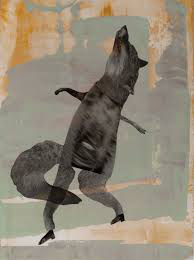 you're just about to stick your nose in the dirty brown water for a needed drink, the next you're being pulled under the water, trapped in the jaws of a prehistoric monster. There is no easy street in nature.
you're just about to stick your nose in the dirty brown water for a needed drink, the next you're being pulled under the water, trapped in the jaws of a prehistoric monster. There is no easy street in nature.
"When I would go out on my long solo rides, I would look for evidence of what I'd learned from those nature programs. The country I rode in was mostly ranch land, so I would see cattle, but not much wildlife. But still, I was always on the lookout. Circling birds meant something. 'Vultures,' I would mutter, then urge my horse into a canter, searching for whatever was beneath the floating figures. Usually it was just crows flying around, but every once and awhile I would find something dead, most often a cow. I had hopes of finding much more exciting carrion, but it was alright when I didn't. I loved being in a world where mysterious and unknown things were happening, and to be a part of that world all I had to do was pay attention."
"I've always made images that combine people and animals, turning them into one being. I've never questioned these images, but I've also never known where they came from. Now I'm excited by the possibility that it's a 10,000 year old subconscious remembering of being part of that older order when we were all mixed up together: animals, humans, plants, the weather -- all that was alive and vital to our existence. I imagine it to come from a time before there was a separation, before humanity created a civilization where we could distance ourselves from anything that was alive. What I'm remembering is only a glimmer, but a glimmer none-the-less. And I like to imagine that when people see these images, they may also have a bit of that same glimmer."
"Several years ago, while driving down our quiet, semi-rural road, I noticed a dog trotting in the middle of the road. It was about 10:00 in the morning, a typical, bright. sunny, New Mexico day. Dogs, for the most part, don't run loose in our village, so I was curious to see who he was. However, as I got closer, I realized it was not dog at all, but a coyote. Held firmly in his mouth was a large, fat hen, clearly no longer in the land of the living. The coyote moved to the shoulder to get out of my way, never interrupting his brisk, efficient trot. When I remembered that morning, I was glad I could bring the memory back to life: his insouciance, his pleasure, and most of all, the fact that he had been alive and well and taking such good care of his coyote business (of course it wasn't my hen)."
In collage work, Roberts works primarily with her own imagery...but occasionally, as in the pictures above, she'll incorporate borrowed imagery as well. It can be a fine line between "borrowing" and "stealing," and she tries not to let her work cross that line; her intent is to marry "diverse images to make something completely new and original. I'm hoping that Rembrandt, were he to walk into the room which held Mother and Daughter With Birds Leaving would, in seeing the head of Agatha Bas that he had painted so many years ago, not be angry at me. Instead I hope that he would be intrigued in seeing how I had used Angela's head to tell a story about a mother who is about to lose her daughter to the outside world. He would understand that the birds spoke of the eventual freedom of the girl, but he would also see the snake-like figure at the top, and would know that as well as freedom there was also implied danger. He would see the pride, but also the sorrow, that the mother feels. He would see that, in so beautifully capturing the face of Angela Bas, he gave me the perfect mother to tell this story."
The image above was inspired by a friend's sudden death. It depicts "that Dark Rider that shows up to escort us to the other side, whatever that is. The crows underfoot, supporting the horse and rider. The sky, dark and swirling with small bits of yellow shining through. The rider, calm but stern, the horse with his large, kind, human eye."
"The crow has just landed on the woman’s outstretched arm. She has a halo made from the branches of a tree in winter, filled with small birds. The crow knows he can trust this woman because of her halo. It tells him that she is safe, holy. His body is made of the feet and legs of a dead bird, but his head is alive and knowing. Like the crow, we can see inside the woman through a portal that has made her available to us. Inside are leaves and tubing--her inner workings. They are sharing something profound, a deep connectedness."
To learn more about Holly Robert's work, visit her blog and her website. You can also watch a short "Artist Talk" video of Roberts here.
Terri Windling's Blog
- Terri Windling's profile
- 708 followers



